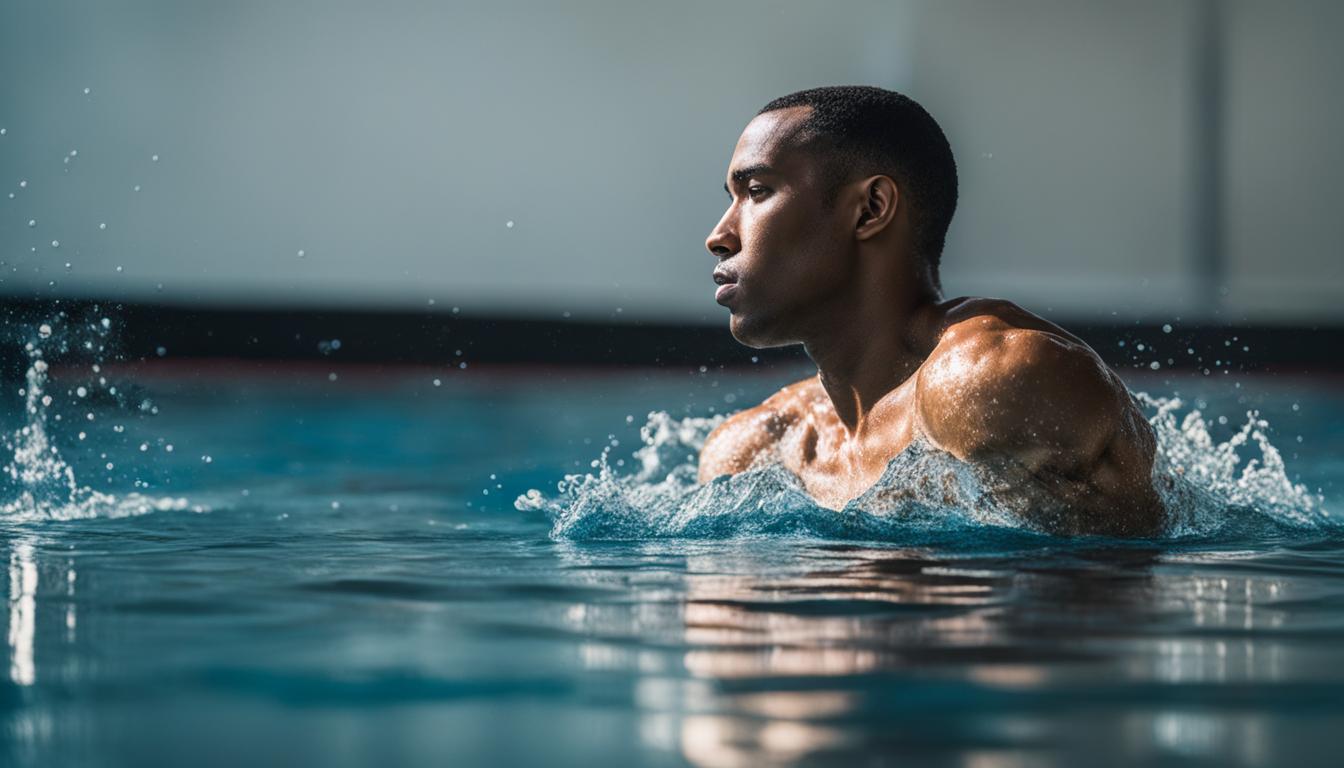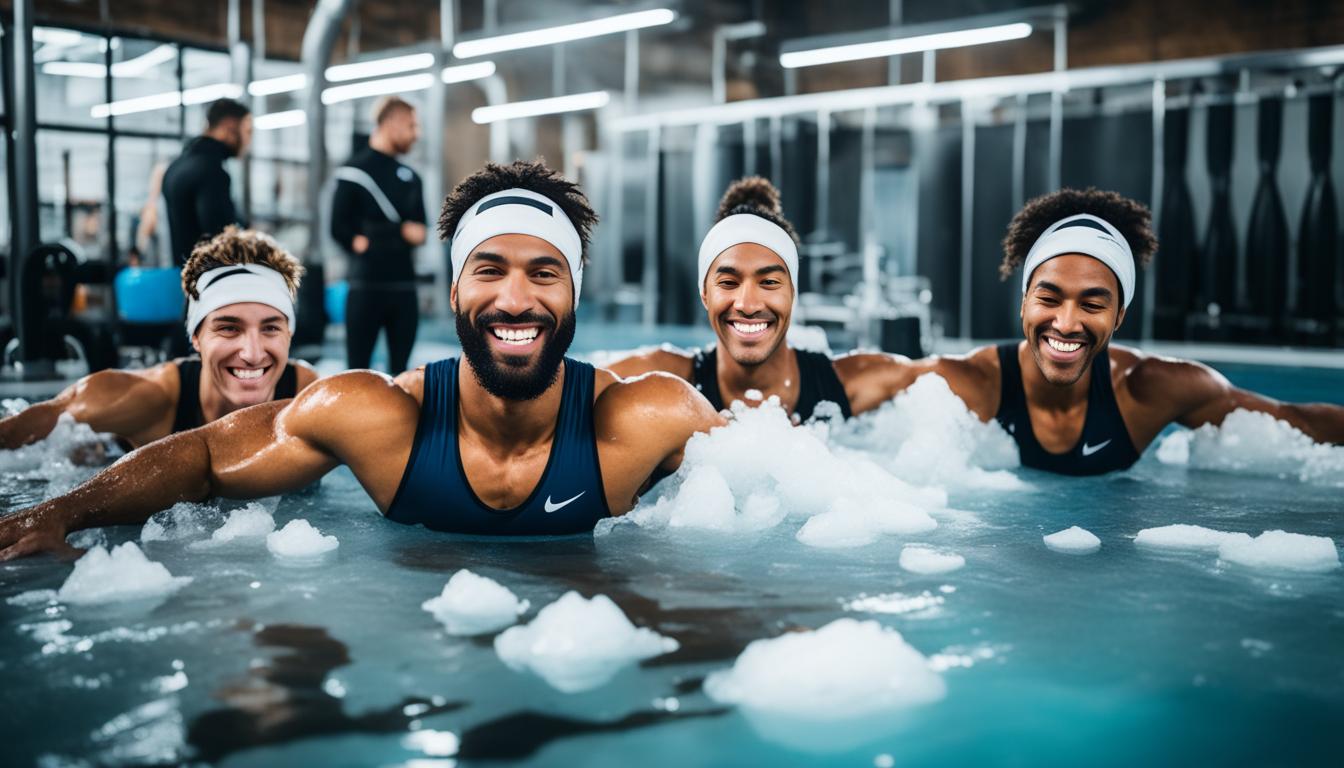As an athlete, you know that pushing your limits is crucial for improving your performance. But did you know that recovery is just as important as training? By incorporating effective athletic recovery techniques into your routine, you can enhance muscle recovery, prevent injuries, and achieve optimal performance.
Sports recovery is a multidimensional process that involves post-workout recovery, muscle recovery, injury prevention, and more. It goes beyond simply taking a rest day or two. To truly optimize your recovery, you need to implement evidence-based strategies that address various aspects of your body’s needs.
Physical therapy and sports science have advanced significantly in recent years, providing athletes with a wealth of knowledge on the best ways to recover. From muscle soreness relief to optimal recovery methods, there are numerous techniques you can explore to find what works best for you.
Key Takeaways:
- Recovery is essential for athletes to enhance their performance and reduce fatigue.
- Effective recovery techniques include hydrotherapy, active recovery, stretching, compression garments, and massage.
- Experiment with different recovery strategies to find what works best for you.
- Sleep and nutrition also play key roles in optimal recovery.
- Athletic recovery techniques can help improve muscle recovery, prevent injuries, and boost your overall sports performance.
The Importance of Recovery in High-Performance Sport
In the world of high-performance sport, recovery is a critical component for athletes striving to reach their full potential. It plays a crucial role in allowing the body to restore physiological and psychological processes, enabling athletes to train and compete at their best.
Adequate recovery is essential to reduce fatigue, prevent muscle injury, and enhance overall performance. For high-performing athletes engaged in repetitive high-level training and intense competition, recovery interventions are key to ensuring optimal recovery and maintaining peak performance.
Various factors influence the rate and quality of recovery, such as the type of exercise performed and external stressors. It is important for athletes and sports professionals to investigate and understand the different recovery interventions available to effectively address fatigue, muscle injury, and overall performance.
By investing time and effort into investigating recovery interventions, athletes can uncover strategies that specifically target their needs. This can lead to reduced fatigue levels, enhanced performance, and ultimately, improved results both on and off the field.

With the constant demands of high-performance sport, understanding and prioritizing recovery is paramount. By implementing appropriate recovery techniques, athletes can optimize their training, reduce the risk of muscle injury, and maximize their overall performance potential.
In the following sections, we will explore effective recovery techniques for athletes and delve deeper into the impact of sleep on recovery and performance. By aligning their recovery routines with proven strategies, athletes can set themselves up for success and unlock their true potential.
Effective Recovery Techniques for Athletes
As an athlete, incorporating effective recovery techniques into your routine is crucial for optimizing your performance and reducing muscle fatigue. Here are some highly beneficial recovery techniques that you should consider:
Hydrotherapy
Hydrotherapy, which includes techniques like cold water immersion and contrast water therapy, can help reduce inflammation and muscle soreness. By exposing your body to alternating cold and warm water, you can enhance blood circulation, promote tissue healing, and accelerate recovery.
Active Recovery
Engaging in low-intensity exercise during your recovery period is known as active recovery. This technique aids in the removal of lactic acid from your muscles, improves blood flow, and promotes quicker recovery. It can include activities like light jogging, cycling, or swimming.
Stretching
Stretching is essential for improving flexibility and circulation, which reduces the risk of injury and enhances muscle recovery. Make sure to include both dynamic and static stretches in your routine before and after workouts to maximize the benefits.
Compression Garments
Wearing compression garments, such as compression socks or sleeves, can promote blood flow and reduce muscle soreness. These garments provide graduated pressure to specific areas, aiding in the removal of metabolic waste and facilitating faster recovery.
Massage
Massage therapy is an effective technique for alleviating muscle tension, promoting relaxation, and enhancing recovery. A professional sports massage can target specific muscle groups, stimulate blood flow, and accelerate the healing process.
Sleep and Nutrition
Don’t overlook the significance of proper sleep and nutrition in optimizing your recovery. Quality sleep allows your body to repair and regenerate, while adequate nutrition provides the necessary nutrients for muscle recovery and growth. Prioritize getting enough sleep and fueling your body with a balanced diet to support your recovery.
By incorporating these effective recovery techniques into your routine, you can enhance your muscle recovery, reduce the risk of injuries, and optimize your overall athletic performance.

The Impact of Sleep on Recovery and Performance
Sleep is crucial for optimal recovery and performance. It plays a vital role in the body’s ability to heal, repair, and regenerate. Lack of sleep, also known as sleep deprivation, can have significant negative consequences on various aspects of health, including cognitive function, mood, glucose metabolism, appetite regulation, and immune function.
When athletes experience sleep deprivation, it can impair their ability to perform at their best. Research has shown that even partial sleep deprivation can have a detrimental impact on athletic performance, especially for tasks that require prolonged sub-maximal effort. The effects of sleep loss can result in decreased reaction time, impaired decision-making, reduced accuracy, and increased fatigue.
On the other hand, increasing sleep duration can have a positive impact on performance. Sleep extension, which involves obtaining more sleep than usual, has been shown to enhance various aspects of athletic performance. Getting sufficient sleep allows the body to fully restore and recover, leading to improved physical and cognitive function.
In addition to getting enough sleep during the night, incorporating short naps during the day can also have performance-enhancing benefits for athletes. Napping has been shown to improve alertness, concentration, and reaction time. It can help counteract the effects of sleep deprivation and provide an additional boost to athletic performance.
Athletes should prioritize getting enough high-quality sleep to support their recovery and overall well-being. This includes following consistent sleep schedules, creating a sleep-friendly environment, and practicing good sleep hygiene habits. Adequate sleep not only promotes optimal recovery but also contributes to better cognitive function, immune function, and overall health.
Image:

Having a good understanding of the impact of sleep on recovery and performance can help athletes prioritize and optimize their sleep habits. By ensuring they get enough sleep and incorporating napping when needed, athletes can enhance their cognitive abilities, physical performance, and overall well-being.
Conclusion
Athletic recovery techniques are critical for high-performance athletes looking to optimize their sports performance and reduce fatigue. By incorporating various recovery strategies into their routines, athletes can enhance muscle recovery, prevent injuries, and achieve their highest level of performance.
Hydrotherapy, active recovery, stretching, compression garments, massage, sleep, and nutrition all play crucial roles in promoting optimal recovery. Hydrotherapy techniques like cold water immersion and contrast water therapy reduce inflammation and muscle soreness. Active recovery exercises aid in the removal of lactic acid and improve blood flow. Stretching improves flexibility and circulation, reducing the risk of injury. Compression garments promote blood flow and reduce muscle soreness. Massage alleviates muscle tension and promotes relaxation.
Proper sleep and nutrition are also key factors in optimal recovery. Sleep is crucial for the body to restore physiological processes and support overall well-being. Sleep deprivation can impair cognitive function, mood, and immune function, while increasing sleep duration and incorporating napping can enhance performance. Balancing proper nutrition ensures athletes get the essential nutrients needed for muscle recovery and energy production.
To find the most effective techniques for individual needs, athletes are encouraged to experiment with different recovery strategies. Every athlete is unique, and what works for one may not work for another. By prioritizing their recovery and incorporating these techniques into their routines, athletes can optimize their recovery process and ultimately boost their overall sports performance.
FAQ
What are some common athletic recovery techniques?
Common athletic recovery techniques include hydrotherapy, active recovery, stretching, compression garments, and massage.
How can recovery techniques improve athletic performance?
Recovery techniques can improve acute performance by reducing fatigue and muscle soreness, allowing athletes to train and compete at their best.
Which recovery techniques are effective for reducing muscle soreness?
Hydrotherapy, such as cold water immersion and contrast water therapy, can help reduce inflammation and muscle soreness.
What is the benefit of active recovery?
Active recovery involves performing low-intensity exercise to aid in the removal of lactic acid and improve blood flow, promoting faster recovery.
How does stretching aid in recovery?
Stretching helps improve flexibility and circulation, reducing the risk of muscle injury and enhancing recovery.
What is the role of compression garments in recovery?
Compression garments promote blood flow and reduce muscle soreness, aiding in the recovery process.
How does massage contribute to recovery?
Massage can alleviate muscle tension, promote relaxation, and enhance the recovery of fatigued muscles.
How does sleep impact recovery and performance?
Sleep is crucial for optimal recovery and performance. It supports physical and cognitive function, metabolism, appetite regulation, and immune function.
What are the consequences of sleep deprivation on athletic performance?
Sleep deprivation can impair cognitive function, mood, glucose metabolism, appetite regulation, and immune function, negatively affecting athletic performance.
Can increasing sleep duration and incorporating napping improve athletic performance?
Yes, increasing sleep duration and incorporating napping can enhance athletic performance by improving cognitive function, alertness, and physical recovery.
Why is it important for athletes to prioritize their recovery?
Athletes should prioritize recovery to enhance muscle recovery, prevent injuries, and achieve their highest level of performance.
Source Links
- http://www.gssiweb.org/sports-science-exchange/article/sse-120-recovery-techniques-for-athletes
- https://www.recoveryforathletes.com/pages/8-best-recovery-techniques-for-athletes-to-turn-into-habits
- https://www.aspetar.com/journal/viewarticle.aspx?id=182


